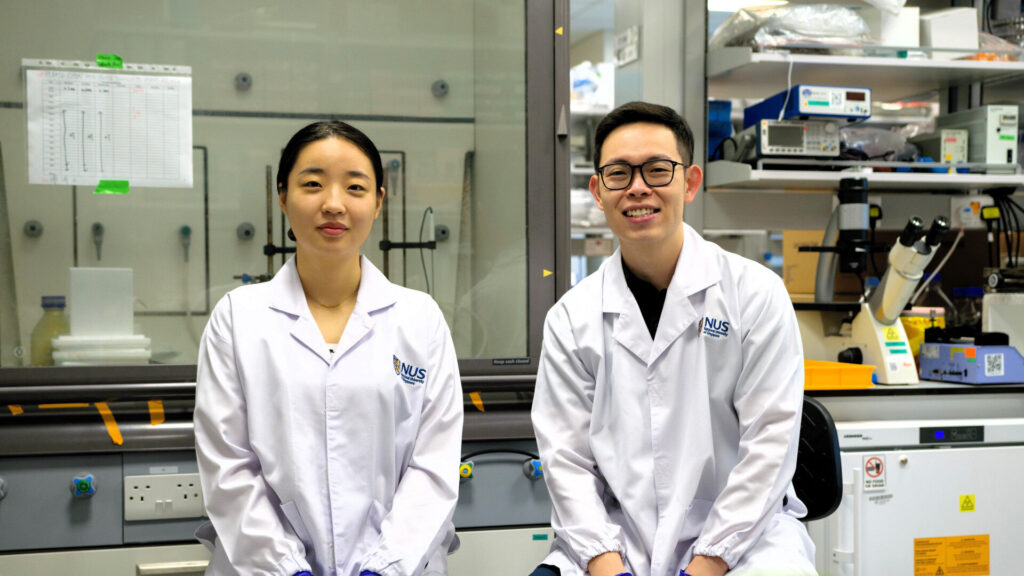A team of researchers from NUS has developed a novel method to enhance the precision of cancer treatment using gold nanoparticles tagged with DNA barcodes.
Led by Assistant Professor Andy Tay from the Department of Biomedical Engineering in the College of Design and Engineering and Institute of Health Innovation & Technology at NUS, the study demonstrates how gold nanoparticles of specific shapes, such as triangles, excel in delivering therapeutic nucleic acids and heating tumor cells during photothermal therapy.
These findings uncover the distinct preferences of tumor cells for certain nanoparticle configurations, which could enable the development of personalized cancer treatments that are safer and more effective.
The team’s novel technique, detailed in a paper published in Advanced Functional Materials on 24 November 2024, enables high-throughput screening of nanoparticle shapes, sizes and modifications, reducing associated screening costs.
Beyond cancer treatment, the method has broader therapeutic applications, including RNA delivery and targeting diseases at the organ-specific level.
Size and shape matter
Gold is more than just bling. When reduced to about one-thousandth the width of human hair, gold nanoparticles shine as therapeutic agents for cancer therapy. For instance, specks of the precious metal are used in photothermal therapy, where particles delivered to the tumor site convert specific wavelengths of light to heat, killing surrounding cancer cells. Gold nanoparticles can also serve as messengers to deliver drugs directly to specific locations within a tumor.
“But for these gold nanoparticles to work, they first need to get into the targeted sites successfully,” said Asst Prof Tay. “Think of it as a delivery person with a special key—if the key doesn’t fit the lock, the package won’t get through.”
Achieving this level of precision requires finding the right nanoparticle design—its shape, size and surface properties must align with the preferences of target cells. However, existing screening methods to pinpoint optimal designs are akin to searching for needles in a haystack. Moreover, these methods often overlook the preferences of different cell types within a tumor, from immune to endothelial to cancer cells.
To tackle these challenges, the NUS researchers turned to DNA barcoding. Each nanoparticle is tagged with a unique DNA sequence, with which the researchers could tag and track individual designs, much like registering a parcel to be shipped by post in a delivery system.
Importantly, these barcodes enabled the team to monitor multiple nanoparticle designs simultaneously in vivo, as their sequences could be easily extracted and analyzed to locate the nanoparticles’ whereabouts within the body.
“We used thiol-functionalisation to securely anchor the DNA barcodes to the surface of the gold nanoparticles. This ensures the barcodes remain stable, resistant to enzymatic degradation and do not interfere with cellular uptake,” said Asst Prof Tay.
To demonstrate this, the researchers prepared nanoparticles in six different shapes and sizes, where their distribution and uptake across various cell types were monitored. They found that round nanoparticles, despite showing poor uptake in cell culture studies, were excellent in targeting tumors in preclinical models as they were less likely to be eliminated by the immune system.
On the other hand, triangular nanoparticles excelled in both in vitro and in vivo tests, resulting in high cellular uptake and strong photothermal properties.
Making cancer treatments safer
The team’s work shines a light on nanoparticle interactions in biological systems and the need to bridge discrepancies between in vitro and in vivo findings, as evidenced by those revealed by the round gold nanoparticles. These insights could guide the development of shape-morphing nanoparticles or intermediate designs tailored to optimize different stages of drug delivery.
Additionally, the research also illuminates the untapped potential of exploring nanoparticle shapes beyond spheres, which dominate those approved by the U.S. Food and Drug Administration. The researchers’ DNA barcoding method could also extend to screening other inorganic nanoparticles such as iron and silica in vivo, broadening the scope for drug delivery and precision medicine.
Looking ahead, the researchers are expanding their nanoparticle library to include 30 designs to identify candidates capable of targeting subcellular organelles. Suitable ones will then be tested for their efficacy in gene silencing and photothermal therapy for breast cancer.
Asst Prof Tay also shared that the findings could significantly improve our understanding of RNA biology and advance RNA delivery techniques, which are increasingly being applied in therapeutics for treatment of various diseases.
“We have addressed a key challenge in cancer treatment—delivering drugs specifically to cancer tissues with greater efficiency,” said Asst Prof Tay.
“The Achilles’ heel of existing nanoparticle-based drugs is their assumption of uniform delivery across all organs, but the reality is that different organs respond differently. Designing optimally-shaped nanoparticles for organ-specific targeting enhances the safety and efficacy of nanotherapeutics for cancer treatment—and beyond.”


